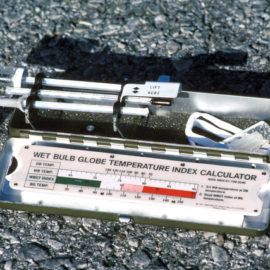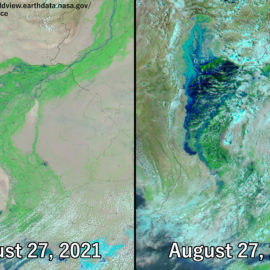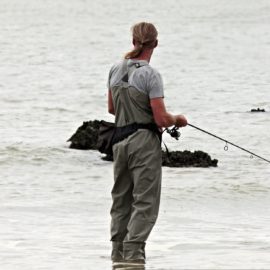
Tackle climate change as we save lands. That is the idea this Administration desires to implement but a lot of the work will be done by the citizens.
A report, with the lofty title “America the Beautiful,′ ′ calls for a decade-long commitment on projects nationwide to make the conservation and restoration of lands and waters an urgent priority. The plan would purify drinking water, increase green space, improve access to outdoor recreation, restore healthy fisheries, reduce the risk of wildfires and recognize the “oversized contributions” of farmers, ranchers, forest owners, fishers, hunters, rural communities and tribal nations. In the process, the effort will produce thousands of new jobs and a stronger economy while also addressing climate change and environmental justice, including expanded access by disadvantaged communities to the outdoors, the report said. President Joe Biden has set a goal of conserving at least 30% of U.S. lands and waters by 2030. If successful, the plan will help slow global warming and preserve some of the nation’s most scenic lands for future generations of Americans, the report said.
apnews.com
According to research by the Center for American Progress estimates that 12% of our land and 25% of our waters are protected. The goal of this effort is to slow climate warming by conserving more land and water. The plan offers grants for new parks, even in cities not just in the country. Tribes can protect land, open more land for conservation and use by others. A Civilian Conservation Corps would be formed to work on conservation and restoration projects nationwide.
The plan follows through on a Biden campaign promise and builds on the Great American Outdoors Act, a 2020 law passed by Congress that authorizes nearly $3 billion for conservation projects, outdoor recreation and maintenance of national parks and other public lands. Even with that injection of federal dollars, the Biden plan relies heavily on voluntary conservation efforts by farmers, ranchers, forest owners and fishing communities. No cost estimate for the project was provided. Much of the spending could be done through department budgets, as well as the 2020 outdoors law, the 2018 farm bill and Biden’s proposed $2.3 trillion infrastructure plan, officials said. “The president’s challenge is a call to action to support locally led conservation and restoration efforts of all kinds and all over America, wherever communities wish to safeguard the lands and waters they know and love,″ the report says. “Doing so will not only protect our lands and waters but also boost our economy and support jobs nationwide.″ The report was signed by three Cabinet members — Interior Secretary Deb Haaland, Agriculture Secretary Tom Vilsack and Commerce Secretary Gina Raimondo — along with Brenda Mallory, who leads the White House Council on Environmental Quality. “Nature plays an important role in improving resilience to climate change and creating a thriving economy,″ Haaland said at a news conference Thursday.
The Great Outdoors Law helps fund this effort by providing $900 million a year for the Land and Water Conservation Fund as well as $1.3 billion for improvements to parks, forests, wildlife refuges and range lands. White House climate adviser Gina McCarthy said “There are many tools available to us” to pay for the conservation program.”
“Where this path leads over the next decade will be determined not by our agencies, but by the ideas and leadership of local communities,″ the Cabinet officials said in the report. “It is our job to listen, learn and provide support along the way to … pass on healthy lands, waters and wildlife to the generations to come.”
Environmental groups were thrilled.
“The bottom line is that healthier public lands and waters mean more opportunities for Americans to recreate outside and for communities’ economies to thrive,” said Jessica Turner, executive director of the Outdoor Recreation Roundtable, a coalition that represents a range of outdoor businesses. Alex Taurel of the League of Conservation Voters added: “We are all-in to help reach and exceed” Biden’s goal “to tackle the climate crisis and expand access to nature in America the beautiful.” Chris Wood, president of Trout Unlimited, a fisheries conservation group, said “there’s a lot to like” in Biden’s initiative, especially its emphasis on local actions. “A bunch of directives from the top won’t get us where we need to go,″ he said in an interview. Provisions to protect landscapes and improve resiliency against drought, wildfire and floods are crucial, Wood said, noting that natural disasters “don’t respect wilderness boundaries″ or property lines. He pledged to work with the administration develop more detailed plans.
Republicans of course had problems with this idea.
Sen. Steve Daines, R-Mont., said the report “uses vague buzz-words” and does not resolve his concern that “this is nothing but an effort to lock up lands, which will hurt Montana’s farmers and ranchers and kill jobs.″ Daines, a co-sponsor of the Great Outdoors law, accused Biden of “pushing ambiguous political ambitions motivated by headlines rather than results.”
And so another area of disagreement where conservation goes against jobs. Where have I heard this before and how many times has it been proved wrong.



